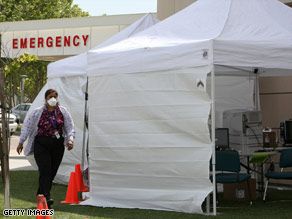It sounds like cryonics is working, at least for microbes. But could any humans now alive have resistance to ancient organisms?
Rational Review carried a link to this story:
http://www.foxnews.com/story/0,2933,526460,00.html
“After more than 120,000 years trapped beneath a block of ice in Greenland, a tiny microbe has awoken. … The new bacteria species was found nearly 2 miles (3 km) beneath a Greenland glacier, where temperatures can dip well below freezing, pressure soars, and food and oxygen are scarce. ‘We don’t know what state they were in,’ said study team member Jean Brenchley of Pennsylvania State University. ‘They could’ve been dormant, or they could’ve been slowly metabolizing, but we don’t know for sure.’”
It is yet another interesting possibility against which humans should prepare to protect ourselves. Where is our Lifeboat?
 A younger science than physics, biology is more linear and less exotic than its older sibling. Whereas physics is (mostly) elegant and symmetric, biology is lunging and ungainly, bound to the material and macroscopic. Its predictions are more specific, its theories less sweeping. And yet, in the end, the exploration of life is the frontier that matters the most. Life gives meaning to all elegant theories and contraptions, life is where the worlds of cosmology and ethics intersect.
A younger science than physics, biology is more linear and less exotic than its older sibling. Whereas physics is (mostly) elegant and symmetric, biology is lunging and ungainly, bound to the material and macroscopic. Its predictions are more specific, its theories less sweeping. And yet, in the end, the exploration of life is the frontier that matters the most. Life gives meaning to all elegant theories and contraptions, life is where the worlds of cosmology and ethics intersect.








